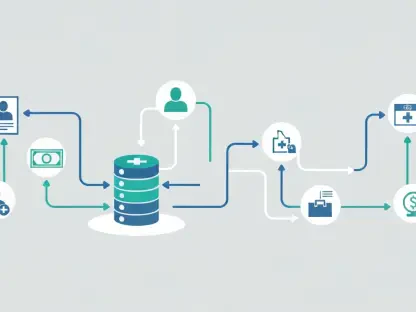Blockchain technology has revolutionized numerous industries, yet the complexity of decentralized application (dApp) development remains a significant barrier for widespread adoption. Lisk, a blockchain ecosystem launched in 2016, aims to dismantle these barriers and make dApp development more accessible and scalable for developers. By leveraging the widespread familiarity of JavaScript and the strategic use of sidechains, Lisk seeks to democratize the blockchain space and offer developers a user-friendly and versatile platform.
Utilizing JavaScript for Accessibility
In an effort to make dApp development more approachable, Lisk harnesses the power of JavaScript, a programming language familiar to a vast majority of web developers. Unlike traditional blockchain platforms like Ethereum, which require knowledge of specialized languages such as Solidity, Lisk leverages JavaScript alongside TypeScript support to lower the barrier to entry for a wider range of developers. This strategic shift enables a broader spectrum of talent to contribute to and innovate within Lisk’s ecosystem. It democratizes dApp development and expands the potential developer base, fostering a more inclusive blockchain community.
JavaScript’s ubiquity and ease of use make it an ideal choice for a platform aiming to attract developers from diverse backgrounds. The language’s widespread adoption in the web development community means that many developers already possess the necessary skills to begin building dApps on Lisk. This familiarity significantly reduces the learning curve, allowing developers to focus on creating innovative solutions rather than mastering new programming languages. Furthermore, JavaScript’s extensive library of frameworks and tools enhances the development process, offering robust support for complex projects.
Sidechains for Scalability and Control
One of the standout features of Lisk is its innovative use of sidechains, which are independent blockchains connected to the mainchain. This architecture addresses some of the most pressing issues in the blockchain space, such as network congestion and scalability. By allowing decentralized applications to operate autonomously on their own sidechains, Lisk reduces the load on the main network and ensures smoother and more efficient operation across the ecosystem. This separation provides developers with greater control over their individual projects without compromising the overall security of the network.
The independence afforded by sidechains allows for greater flexibility and customization, enabling developers to tailor their blockchain solutions to specific needs. Each dApp can define its own rules, protocols, and consensus mechanisms, which helps achieve the desired level of decentralization, scalability, and security for its use case. Despite their autonomous operation, sidechains can still communicate with the mainchain to record vital data, ensuring the integrity and consistency of the overall ecosystem. This approach maintains the security of the main network while preventing it from becoming overloaded with the sheer volume of transactions and activities from multiple dApps.
Delegated Proof of Stake (DPoS) for Efficiency
Lisk’s adoption of the Delegated Proof of Stake (DPoS) consensus model introduces a more efficient alternative to the traditional Proof of Work (PoW) model. DPoS employs a limited number of validators to secure the network and process transactions, with these validators selected through community voting to maintain decentralized control. This system ensures fast transaction confirmation times and significantly lower energy consumption compared to PoW. In an era where environmental sustainability is increasingly important, DPoS provides an eco-friendly consensus mechanism that aligns with broader societal goals.
Validators in Lisk’s DPoS system play a crucial role in maintaining network security and integrity. They are incentivized with LSK tokens for their contributions to transaction validation and overall network security. The process of selecting validators through community voting ensures that the control of the network remains decentralized and accountable, promoting trust and transparency within the ecosystem. Additionally, delegators—those who confer their voting power to trusted validators—are also rewarded for their participation, fostering active engagement and involvement in the consensus process.
Comprehensive Software Development Kit (SDK)
The core of Lisk’s blockchain ecosystem is its Software Development Kit (SDK), which equips developers with the essential tools required to create decentralized applications. The SDK comprises four primary components: the consensus mechanism, the sidechain system, a customizable backend, and an optimized frontend. This comprehensive toolkit enables developers to build robust and performant dApps while avoiding mainchain congestion and streamlining the development process.
The consensus mechanism within the SDK utilizes DPoS for transaction validation and network stability. The independent sidechain system allows developers to create dApps that operate on separate blockchains, ensuring smoother operation and stability across the ecosystem. The customizable backend component provides the flexibility to tailor specific functionalities to the needs of individual applications. At the same time, the optimized frontend component enhances user interaction and overall user experience within the Lisk platform. Together, these components create a versatile and powerful development environment that supports a wide range of decentralized applications.
Flexibility and Customization
One of Lisk’s most significant advantages is the flexibility and customization offered by its sidechain model. Developers have the freedom to define their own set of rules and protocols for each sidechain, allowing them to adjust the level of decentralization, scalability, and security according to the specific needs of their projects. This customization extends to the ability to create unique authentication systems for applications such as financial platforms, voting systems, or digital identities, further enhancing the versatility and utility of Lisk’s platform.
Despite the autonomy of sidechains, they maintain the ability to communicate with the mainchain, ensuring the security and consistency of the entire ecosystem. This communication allows critical data to be recorded on the mainchain, providing a secure and reliable record without overburdening the main network. This architectural approach ensures that developers can build tailored solutions while benefiting from the overarching security and stability of the Lisk ecosystem.
Enhancing Developer Engagement and Innovation
Lisk’s ability to handle multiple tokens within each sidechain provides developers with additional tools to create internal economies within their decentralized applications. This functionality adds another layer of flexibility, enabling developers to design complex economic models and innovative solutions tailored to their specific needs. By allowing for the creation of custom tokens, Lisk encourages further experimentation and innovation within the platform.
The use of familiar technologies such as JavaScript also contributes to an engaged and active developer community. The lower barriers to entry invite a broader range of contributors, increasing the potential for groundbreaking solutions within the platform. This inclusivity fosters a collaborative environment where developers can build off each other’s work, driving innovation and progress within the Lisk ecosystem.
A Competitive Yet Promising Landscape
Blockchain technology has radically transformed various industries, but the intricacies of developing decentralized applications (dApps) still pose a significant obstacle to its mainstream adoption. Lisk, a blockchain ecosystem introduced in 2016, aims to break down these barriers by making dApp development more accessible and scalable for developers. The platform utilizes JavaScript, a programming language widely known by developers, which simplifies the learning curve associated with blockchain. Additionally, Lisk employs the use of sidechains—individual chains connected to the main blockchain—to enhance scalability and versatility within the ecosystem. This strategic approach by Lisk seeks not only to democratize blockchain technology but also to create a user-friendly platform that encourages more developers to engage in dApp development. By streamlining the development process and leveraging familiar tools, Lisk aspires to foster innovation and broaden the adoption of blockchain technology in various fields.









